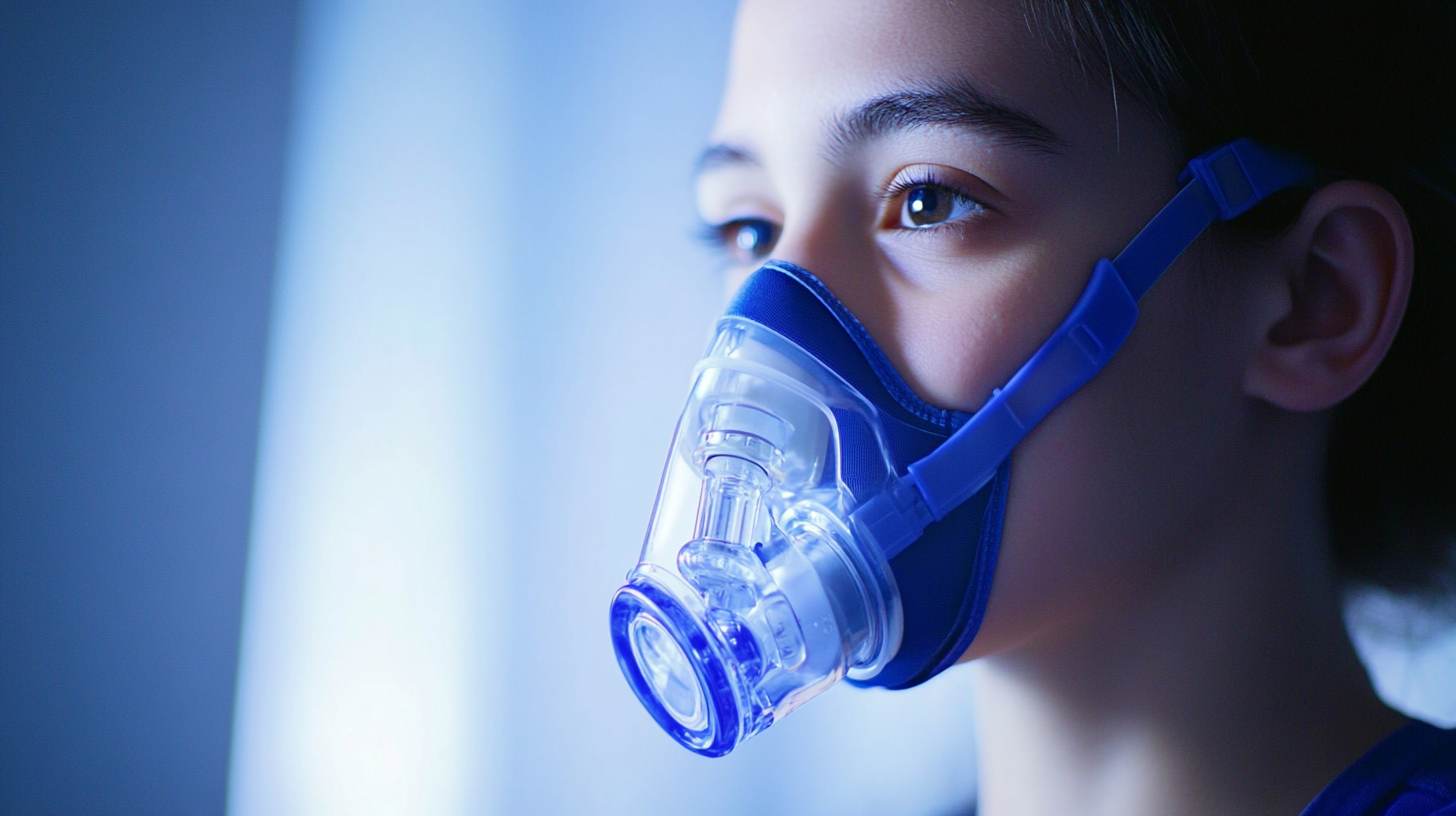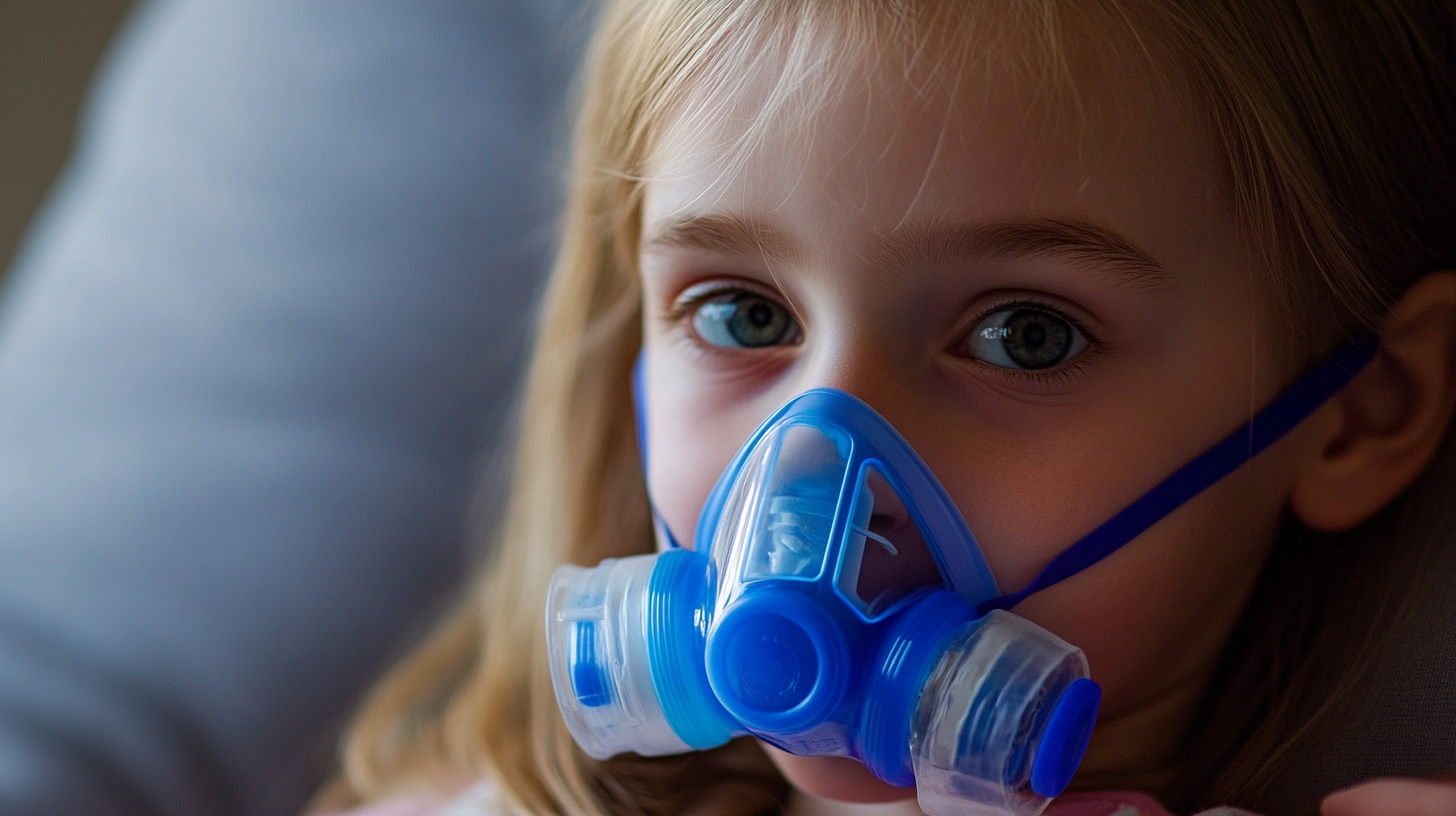
Advantages of Using the Best Nebulizer Mask for Enhanced Respiratory Health
In recent years, the importance of respiratory health has gained increasing recognition, especially in the wake of global health challenges. According to the World Health Organization, over 235 million people worldwide suffer from asthma, highlighting the urgent need for effective treatment options. One promising solution is the use of a nebulizer mask, which allows for the delivery of medication directly to the lungs, facilitating faster and more efficient relief compared to traditional inhalers. Research indicates that nebulization therapy can enhance drug absorption by up to 50%, making it a vital tool for managing chronic respiratory conditions such as asthma and COPD. As healthcare professionals seek to optimize treatment modalities for patients, understanding how to choose and use the best nebulizer mask becomes crucial in promoting enhanced respiratory health and improving patients' quality of life.

Benefits of the Best Nebulizer Mask for Respiratory Relief
Using the best nebulizer mask can significantly enhance respiratory health by delivering medication directly to the lungs, providing targeted relief for conditions such as asthma, COPD, and other respiratory issues. A well-designed nebulizer mask ensures maximum medication absorption, which leads to quicker and more effective symptom relief. These masks are typically crafted to fit securely and comfortably, reducing medication waste and making treatments more efficient.
When using a nebulizer mask, it’s essential to consider proper maintenance for optimal performance. Tips include regularly cleaning the mask with warm, soapy water to prevent bacterial growth, and ensuring that the nebulizer machine is functionally checked before each use. Additionally, selecting a mask that matches the patient's face size ensures a snug fit, which is vital for preventing leaks and maximizing medication delivery.
Another key benefit of the best nebulizer masks is their ease of use, especially for children and the elderly. For caregivers, understanding how to properly assist patients is crucial. Tips to facilitate this process include creating a calming environment during treatments and involving the patient in selecting their preferred mask type, thereby making the experience less stressful and more comfortable. Emphasizing routine use can lead to consistent respiratory relief and improved health outcomes.
Key Features to Look for in a Nebulizer Mask
When selecting the best nebulizer mask for respiratory health, there are several key features to consider that can enhance the effectiveness of the treatment. First and foremost, the fit of the mask is crucial. A well-fitting mask ensures that the medication is delivered efficiently while minimizing the escape of aerosolized medication. Look for adjustable straps and a soft cushion that can conform to various face shapes, providing both comfort and a secure fit during use.

Another vital feature is the material of the nebulizer mask. Masks made from medical-grade, latex-free materials are preferable as they reduce the risk of allergic reactions and improve durability. Additionally, consider masks with a transparent design. A clear mask allows patients to monitor their therapy visually and make adjustments as needed, which can enhance compliance during treatment sessions.
Finally, ease of cleaning is essential for maintaining hygiene and extending the lifespan of the mask; therefore, opt for masks that can be easily disassembled and are dishwasher-safe. By focusing on these features, users can significantly improve their respiratory health through more effective nebulizer therapy.
How to Properly Use a Nebulizer Mask for Maximum Efficiency
Using a nebulizer mask correctly is crucial for maximizing its therapeutic benefits and ensuring optimal respiratory health. To begin, make sure to wash your hands thoroughly before handling the nebulizer mask. This prevents the introduction of harmful bacteria or germs. Once your hands are clean, assemble the nebulizer according to the manufacturer’s instructions. Attach the mask securely to the nebulizer’s mouthpiece to guarantee proper airflow and medication delivery.
When using the nebulizer mask, sit in an upright position to facilitate better lung expansion and medication absorption. Place the mask snugly over your nose and mouth, ensuring there are no air leaks. It’s important to breathe deeply and slowly through the mask, allowing the mist to penetrate deeply into the lungs. Treatment sessions typically last between 10 to 15 minutes. After the session, clean the mask and nebulizer components as instructed to maintain hygiene and prevent medication buildup, which can affect the performance of the device. Following these simple steps can significantly enhance the efficiency of your nebulizer treatment, leading to better respiratory health outcomes.
Maintenance Tips for Ensuring Long-lasting Nebulizer Masks
Proper maintenance of nebulizer masks is essential for optimal performance and enhanced respiratory health. To ensure your nebulizer mask serves you well for a long time, regular cleaning is crucial. After each use, disassemble the mask from the nebulizer and rinse it thoroughly under warm, soapy water. This helps remove any medication residue and prevents bacterial growth, ensuring each inhalation is safe and effective.
In addition to regular washing, it's important to inspect your nebulizer mask for wear and tear. Check for any cracks or discoloration that may indicate the need for replacement. Make sure to store your mask in a dry, clean environment to avoid contamination. Additionally, consider replacing it every six months to maintain efficacy. By following these maintenance tips, you can enhance your nebulizer's functionality and support your respiratory health effectively.

Common Mistakes to Avoid When Using a Nebulizer Mask
When using a nebulizer mask, it's essential to avoid common mistakes that can hinder the effectiveness of your treatment. One frequent error is not properly cleaning the mask after each use. Nebulizer masks can accumulate bacteria and other harmful pathogens if not sanitized properly, leading to potential respiratory infections. Make it a habit to clean your mask and other equipment thoroughly, preferably after every session, to ensure you’re inhaling medication in a safe and hygienic manner.
Another mistake is not ensuring a proper fit of the nebulizer mask. A poorly fitting mask can lead to medication wastage and reduced treatment efficacy, as the mist may escape instead of entering the lungs. It is crucial to adjust the straps and mask size according to your comfort and facial contours for a snug fit. Additionally, some users may rush through the nebulization process, thinking that quicker means better. However, taking your time allows for optimal medication delivery, ensuring that you gain the maximum benefit from your nebulizer therapy.
